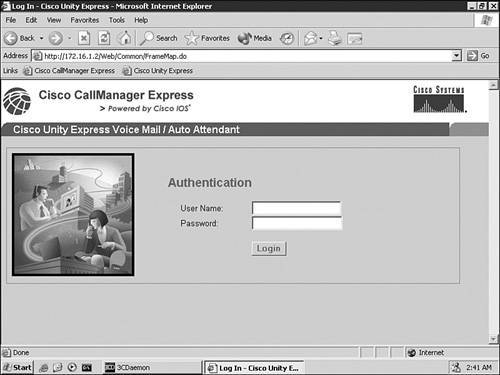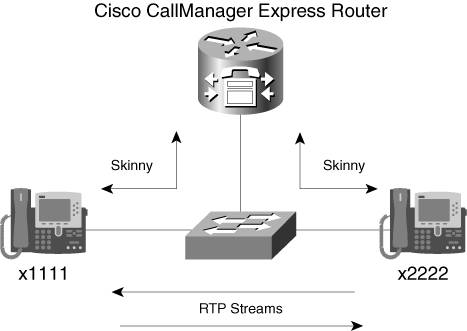Cisco CallManager in the Express Lane
Cisco CallManager in the "Express" LaneSome small office/home office (SOHO) environments lack sufficient IP phones to justify the purchase of CCM servers. Although these smaller offices might be able to register with a centralized CCM cluster using the IP WAN, some IP telephony designers instead recommend (for redundancy and scalability) the purchase of Cisco CallManager Express (CME) routers for these locations. The CME feature supports CCM-like functions on a router, as opposed to a dedicated server platform, thus reducing a customer's investment. Administrators configure CME features via a router's IOS or optionally via a web interface. Depending on the router platform, a single CME router supports up to 240 IP phones. Examples of Cisco router models capable of running the CME feature include:
While CME offers CCM-like call processing features in a router, Cisco Unity Express (CUE) offers voice mail and auto attendant features in a router. CUE, however, requires extra hardware. This extra hardware contains storage space for voice mail messages. IP telephony designers can select between two storage options for a CUE router:
CUE hardware and software fully integrates into 2600XM, 2691, 2800, and 3800 Series routers. Although you can use CUE in conjunction with CME, you might also use CUE as your voice mail/auto attendant solution in a CCM server environment. Like the CCM server, administrators can configure both the CME and CUE via a web interface, as shown in Figure 4-30. Figure 4-30. CME/CUE Administration Interface CUE's automated attendant function allows the router to answer incoming calls. Callers can then interact with CUE by, for example, entering extension numbers using their telephony keypad. Companies can create custom greetings and provide recorded answers to commonly asked questions (for example, directions and hours of operation). Also, administrators can configure CUE with a company's holiday and hours of operation information, giving callers different call treatment for times when the business is closed. Similar to a CCM server environment, IP phones register with a CME router using SCCP. However, recall that before an IP phone registers, it typically gets an IP address from a DHCP server and downloads a configuration file from a TFTP server. In the CME environment, the CME router can function as both a DHCP server and a TFTP server, eliminating the need for an external server. Once the CME router establishes a call between a couple of IP phones, the IP phones communicate directly between themselves using the RTP, as shown in Figure 4-31. Figure 4-31. IP Phone/CME Router Communication The CME router might also contain analog or digital interfaces (for example, FXO, Foreign Exchange Station (FXS), Integrated Services Digital Network (ISDN), or T1 interfaces) to send calls originating from an IP phone out to a PBX or to the PSTN. |
EAN: 2147483647
Pages: 138
- Chapter VII Objective and Perceived Complexity and Their Impacts on Internet Communication
- Chapter VIII Personalization Systems and Their Deployment as Web Site Interface Design Decisions
- Chapter X Converting Browsers to Buyers: Key Considerations in Designing Business-to-Consumer Web Sites
- Chapter XVI Turning Web Surfers into Loyal Customers: Cognitive Lock-In Through Interface Design and Web Site Usability
- Chapter XVIII Web Systems Design, Litigation, and Online Consumer Behavior
